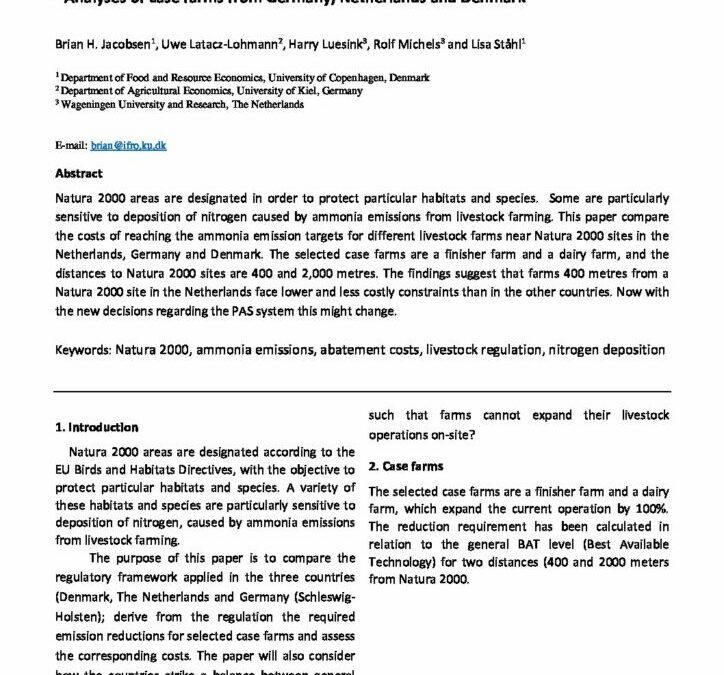Costs of regulating ammonia emissions from livestock farms near Natura 2000 areas

Natura 2000 areas are designated in order to protect particular habitats and species. Some are particularly sensitive to deposition of nitrogen caused by ammonia emissions from livestock farming. This paper compare the costs of reaching the ammonia emission targets for different livestock farms near Natura 2000 sites in the Netherlands, Germany and Denmark. The selected case farms are a finisher farm and a dairy farm, and the distances to Natura 2000 sites are 400 and 2,000 metres. The findings suggest that farms 400 metres from a Natura 2000 site in the Netherlands face lower and less costly constraints than in the other countries. Now with the new decisions regarding the PAS system this might change
Natura 2000 areas are designated according to the EU Birds and Habitats Directives, with the objective to protect particular habitats and species. A variety of these habitats and species are particularly sensitive to deposition of nitrogen, caused by ammonia emissions from livestock farming. The purpose of this paper is to compare the regulatory framework applied in the three countries (Denmark, The Netherlands and Germany (SchleswigHolsten); derive from the regulation the required emission reductions for selected case farms and assess the corresponding costs. The paper will also consider how the countries strike a balance between general national regulation and more site-specific regulation taking into account the local depositions from projects. Can the costs be prohibitively high in a given location such that farms cannot expand their livestock operations on-site?
